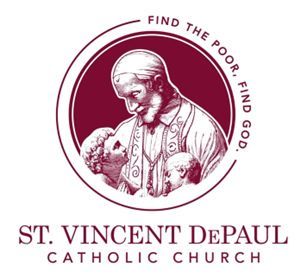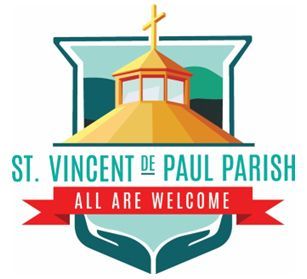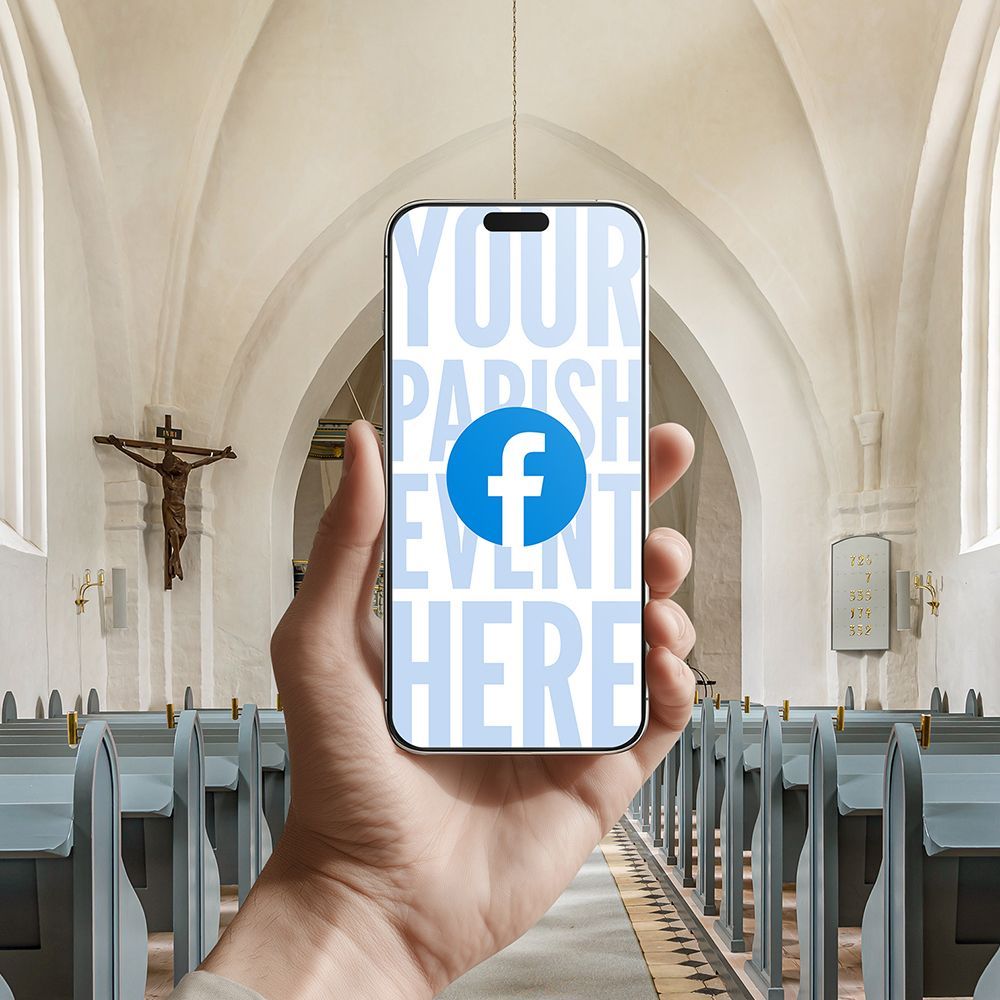Is it Time For a Church Branding and Logo Makeover?

At its core, branding is the art of crafting a distinct identity that resonates with a parish’s local community — both in design and action. A brand identity is encapsulated in a variety of elements, with a parish’s logo at the forefront. A logo is not merely a symbol. A logo is the visual representation of a church's ethos, beliefs, and mission. It serves as the face of the community, instantly recognizable and ingrained with symbolism.
How Your Logo Tells Your Parish's Story
In the context of church branding, a well-designed logo holds immense potential in conveying your community’s rich tapestry of faith and tradition. Whether it includes the image of a saint, depicts your campus art or architecture, or is a blend of imagery sacred to your community, your logo encapsulates the essence of your church's story.
When considering a new logo, a parish should take into account some of the following design questions:
- What color(s) are important to the parish?
- What font is easy to read from a distance but also looks nice?
- Is the parish named for a particular saint that you may want to depict?
- Are there any special symbols or sacred imagery that may be important to include?
- Do you have a specific tagline that should be included?
- Is it important to your parish to include any architectural or natural feature of your particular location?
- Is it important to you that you reflect your parish mission into the design?
- What are the feelings that you want to convey to people who see your logo?
For example, below are two logos that we designed for two different churches with the same name, St. Vincent DePaul. Although the churches share a common name, their logos couldn’t be more different! Each parish logo conveys a distinct message and illustrates the unique identity of the parish to which it belongs. Both are very different, but each is perfect for its respective parish.


On the left is the logo we designed for St. Vincent DePaul Catholic Church in Los Angeles, CA. This logo conveys the parish’s mission to serve those in need both with the words incorporated into the logo and with the image of St. Vincent DePaul depicted alongside those he is ministering to. The parish decided to choose a single color for their logo and the overall effect of the whole piece is one of stability and service to those in need. A visitor to this parish might see this logo and feel calm and at peace, while also easily receiving the message that this church is a place that won’t leave anyone behind.
On the right is a logo that we designed for St. Vincent DePaul Parish in Milford, PA. This logo is bursting with colors and show the hands of God holding up the light-house-like tower and cross that is part of their real-life church architecture. The message “All Are Welcome” is highlighted brightly inside a red banner, front and center, ensuring that anyone who looks at this logo knows that they belong! A visitor to this parish might see this logo and be inspired to understand that this parish community is a beacon of hope and welcome for anyone who needs a place to lift their spirit.
TheBest Uses for Your Parish Logo and Brand
Remember, there are many places a parish can make use of their logo to secure a fantastic first (or 20th) impression. Don’t forget to use your logo on:
- Business Cards
- Signs
- Banners
- Church Merch and Gifts
- Posters
- Bulletins
- Letterhead and Envelopes
- Website and Social Media Profiles
- Mailers
- Special Event Programs
Branding Beyond ChurchYour Logo
Although logos are part of an overall brand, branding goes beyond simply a logo. The power of branding extends far beyond aesthetics — it permeates every facet of the church's outreach efforts. From the warmth of a welcoming smile to the sincerity of a heartfelt homily, branding is embodied in every interaction your community engages in, shaping perceptions and forging connections. Thus, while a logo may serve as the initial point of contact, it is the collective actions of the community that ultimately define the brand.
For a Catholic parish, a brand might include your mission statement, how welcoming your website is for visitors, you social media profiles and what you choose to share, and the programs you provide for your community to participate in. The beauty is that all of these things become part of your considerations when it comes to designing the perfect logo for your parish to represent your brand, too!
Get Help With Your Parish Brand Design
Is it time for a church “makeover” in your materials? If so, check out our parish logo and branding solutions. We have examples of many different styles of church logos we’ve created to inspire you on our website!
Not sure yet? To help parishes investigate if their current logo might benefit from a redesign, we recently published an article called Church Branding for Beginners. This article includes some questions church staff can ask themselves to help decide if a new logo and church brand might be in their future.
If, instead, you are interested in some more inspiration on how to tell your unique story through design, check out these successful church logos our designers loved making and why or browse our complete guide to parish branding (it's free)!
“You are the light of the world. A city set on a mountain cannot be hidden. Nor do they light a lamp and then put it under a bushel basket; it is set on a lampstand, where it gives light to all in the house. Just so, your light must shine before others, that they may see your good deeds and glorify your heavenly Father.”
— Matthew 5:14-16
Updated 11-05-2025




